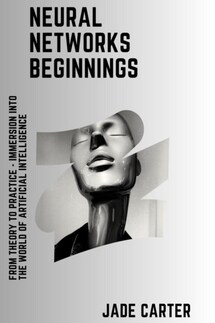Neural Networks Beginnings - страница 4
Next, the model is compiled using the compile method. The optimizer chosen is Adam with a learning rate of 0.001, the loss function is categorical cross-entropy, and the classification accuracy is used as the metric.
Then, a sound file in the wav format is loaded and decoded using tf.audio.decode_wav, and transformed into float32 numerical values. The file is then split into fragments of length 640 with a step of 320. If the file cannot be evenly divided into fragments, padding is added.
Next, Mel-frequency cepstral coefficients (MFCC) features are extracted from each sound fragment using the tf.signal.mfccs_from_log_mel_spectrograms function. These extracted features are used for training the model.
To train the model, the data needs to be prepared. In this case, text is used that indicates all possible classes and the corresponding label for each class. For convenience, the text is converted into one-hot encoding using the tf.keras.preprocessing.text.one_hot method. The prepared data is then passed to the model for training using the fit method.
After training the model, the results are predicted on the same data using the predict method. The index with the highest probability and its corresponding class are selected.
Finally, the predicted class labels are outputted.
Recommender system
For convenience, let's describe the process in five steps:
Step 1: Data collection
The first step in creating a recommender system is data collection. This involves gathering data about users, such as their preferences, purchases, browsing history, and so on. This data can be obtained from various sources, such as databases or user logs.
Step 2: Data preparation
After the data is collected, it needs to be prepared. For example, data preprocessing may be required to clean it from noise and outliers. Various techniques can be used for this, such as standardization and normalization of the data.
Step 3: Model training
Once the data is prepared, we can proceed to model training. To create a recommender system, we can use various types of neural networks, such as convolutional neural networks or recurrent neural networks. The model should be trained on the training set of data.
Step 4: Model testing
After training the model, we need to test it to ensure that it works correctly. To do this, we can use a testing set of data. During testing, we can analyze metrics such as accuracy and recall.
Step 5: Model application
After the model has passed testing, it can be used to recommend content to users. For example, we can use the model to recommend science fiction books to a user who has previously purchased such books. In this case, the model can use data about the user to predict what they might be interested in.
The code for a recommender system will depend on what data about users and items is being used, as well as what neural network architecture is being employed. Below is an example code for a simple matrix factorization-based recommender system that utilizes user and item ratings data:
import numpy as np
#loading the data
ratings = np.array([
[5, 3, 0, 1],
[4, 0, 0, 1],
[1, 1, 0, 5],
[1, 0, 0, 4],
[0, 1, 5, 4],
])
# initializing the parameters
num_users, num_items = ratings.shape
num_factors = 2
learning_rate = 0.01
num_epochs = 1000
# initializing the user and item matrices
user_matrix = np.random.rand(num_users, num_factors)






